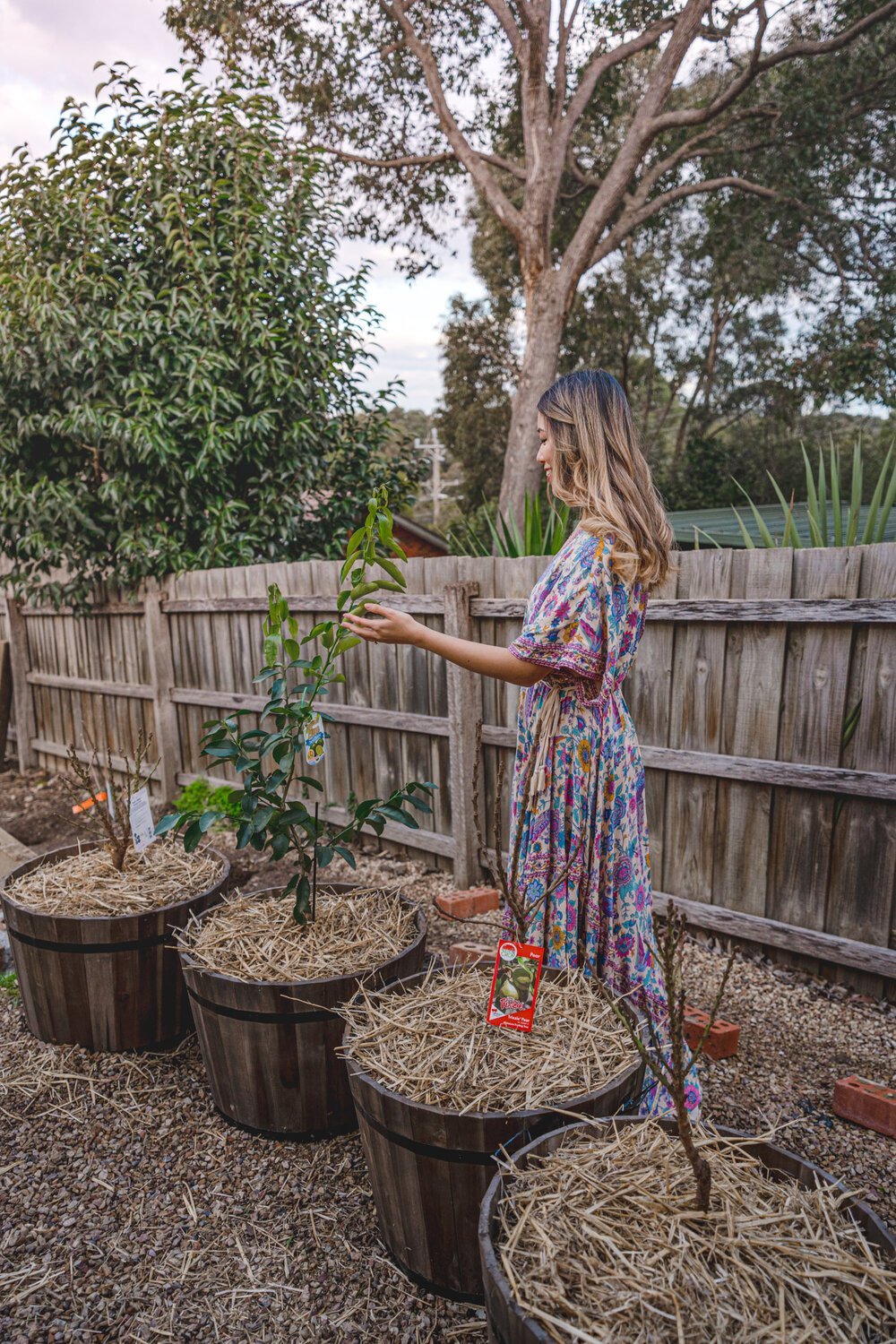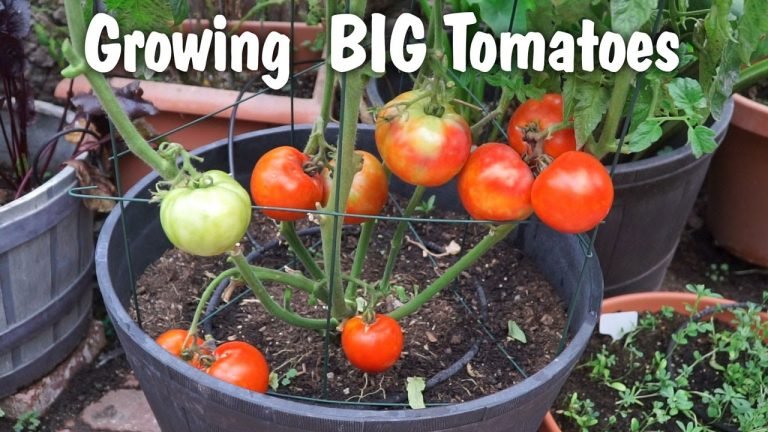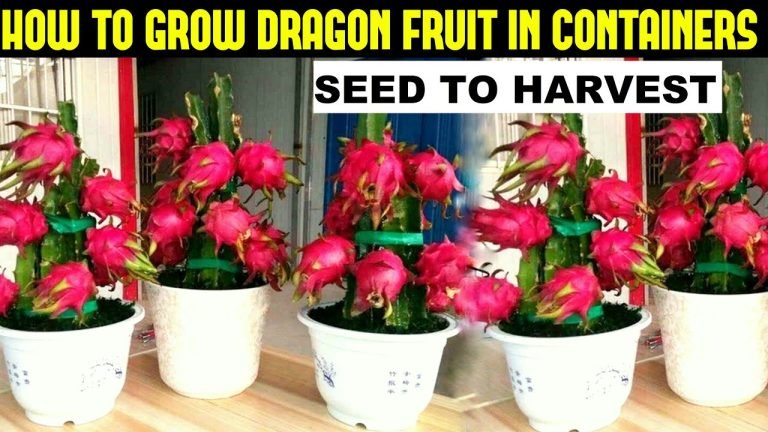how to grow a nectarine tree in a pot – [Beginners Guide]
Have you ever considered growing a nectarine tree in a pot? It might sound unconventional, but it’s actually a fantastic way to enjoy fresh, juicy nectarines right from your own home. Not only is it a great way to grow fruit if you’re short on outdoor space, but it also offers the added bonus of being able to move your tree around to optimize its growth and health.
I have personally grown a nectarine tree in a pot for a few years now, and I can tell you that it’s been a wonderful experience. Not only have I been able to enjoy the fruits of my labor, but I’ve also found the process of growing my own tree to be incredibly rewarding.
In this guide, we’ll walk you through the steps to successfully grow a nectarine tree in a pot, from selecting the right container and soil to pruning and harvesting. We’ll also discuss some common issues you may encounter and how to troubleshoot them.
So whether you’re a seasoned gardener looking for a new challenge or a beginner interested in starting your own fruit tree, growing a nectarine tree in a pot might just be the perfect project for you. Let’s dive in and get started!
Pot or container selection
When it comes to growing a nectarine tree in a pot, the size and capacity of the pot are just as important as they are for cherry tomatoes. In fact, it’s even more crucial for trees since they require more space to grow and spread their roots.
Ideally, you should choose a pot that is at least 18 inches (45 cm) in diameter and 18 inches (45 cm) deep. This will allow your nectarine tree to establish a strong root system and have enough space to grow to its full size. Keep in mind that the pot size will also depend on the variety of nectarine tree you choose, as some varieties may grow larger than others.
In terms of construction, it’s important to choose a pot that is sturdy and durable since it will need to support the weight of a mature nectarine tree. Terracotta or ceramic pots are a great option since they are breathable and help regulate soil moisture, but plastic or fiberglass pots are also suitable. Avoid using metal or wooden pots as they can rust, rot, or release harmful chemicals into the soil.
Similar to cherry tomatoes, your nectarine tree pot should have drainage holes to allow excess water to drain out. If your pot doesn’t have drainage holes, you can create them yourself using a drill or choose a pot with pre-drilled holes. Additionally, make sure to choose a pot with a stable base that can support the weight of the tree and prevent it from tipping over.
By choosing the right size and construction for your nectarine tree pot, you’ll create an optimal growing environment that will help your tree thrive and produce delicious fruit.
Make suitable soil mix
Growing a nectarine tree in a pot requires specific soil conditions to ensure optimal growth and fruit production. Like cherry tomatoes, the type and mixture of soil for your nectarine tree is crucial for success. It is recommended to use a high-quality potting mix specifically formulated for fruit trees or a mix designed for citrus trees. This soil mix should be well-draining and nutrient-rich, providing the perfect balance of water retention and drainage for your tree’s roots.
Avoid using garden soil or topsoil, as these types of soil may not be suitable for container-grown plants. They may also contain weed seeds or pathogens that can harm your nectarine tree. Consider adding some amendments to your soil mix, such as compost or organic fertilizers, to improve soil structure, nutrient content, and drainage. Additionally, the soil pH should be slightly acidic, between 6.0 and 6.5, to support the growth and fruit production of your nectarine tree.
By choosing the right soil mix and adding the right amendments, you can provide your nectarine tree with the best growing conditions for optimal growth and fruit production.
How to plant the a nectarine tree?
Here’s a step-by-step guide for planting a nectarine tree in a pot at home:
Step 1: Choose the right pot
Select a pot that is large enough to accommodate the root system of your nectarine tree. A pot with a diameter of at least 20 inches and a depth of at least 18 inches is a good size for most nectarine varieties.
Make sure the pot has drainage holes to allow excess water to drain away from the roots. If the pot doesn’t have drainage holes, be sure to add some to the bottom before planting.
Step 2: Prepare the potting mix
Prepare a well-draining soil mix suitable for nectarines by combining equal parts of sand, perlite, and peat moss with 2 parts of quality potting soil. Mix the ingredients thoroughly in a large container before filling the pot.
Step 3: Add soil mix to the pot
Add enough soil mix to the bottom of the pot to cover the drainage holes. Then, fill the pot with the soil mix until it reaches about 2 inches below the rim of the pot.
Step 4: Plant the nectarine tree
Gently remove the nectarine tree from its container, taking care not to damage the roots. Place the tree in the center of the pot, ensuring that it is planted at the same depth it was in the original container. Fill the pot with soil mix around the roots, pressing the soil firmly but gently around the tree.
Step 5: Water and Fertilize
Water the tree thoroughly, allowing the water to drain from the bottom of the pot. Continue to water the tree deeply once or twice a week, depending on the weather and the size of the pot.
Apply a balanced fertilizer (10-10-10 or 14-14-14) to the soil around the tree after planting, following the package instructions for the recommended amount and frequency.
Step 6: Provide Sun and Protection
Place the pot in a location that receives full sun for at least six hours per day, and protect the tree from strong winds or excessive heat.
When the tree begins to bear fruit, cover it with netting to protect it from birds.
By following these steps, you can plant a nectarine tree in a pot at home, providing optimal growth conditions for your tree and a bountiful harvest of delicious fruit.
How to care for a nectarine tree?
Growing a nectarine tree in a pot at home can be a fun and rewarding experience. Here are some tips for caring for your nectarine tree to help it grow optimally:
Watering Requirement
Nectarine trees need consistent moisture, but they do not like to be overwatered. It is important to water the tree deeply once or twice a week, depending on the weather and the size of the pot. Before watering, check the moisture level of the soil by sticking your finger about an inch into the soil. If it feels dry at that depth, it’s time to water. Avoid watering the leaves, as this can promote disease.
Fertilizer Requirement
Nectarine trees in pots require regular fertilization to grow and produce fruit. Use a balanced fertilizer, such as a 10-10-10 formula, according to the package directions. Fertilize the tree every four to six weeks during the growing season (spring and summer), and reduce or stop fertilization during the fall and winter months.
Sunlight Needs
Nectarine trees need plenty of direct sunlight to grow and produce fruit. Choose a spot in your garden or patio that gets at least 6-8 hours of direct sunlight per day. If you don’t have a sunny spot outdoors, you can also grow nectarine trees in a sunny window indoors using a grow light.
Pruning & Training
Pruning and training your nectarine tree can help improve air circulation, increase sun exposure, and make harvesting easier. Prune the tree during the dormant season (winter) to remove any dead or damaged branches, and thin out any crossing branches. When the tree is young, it is important to shape it by cutting back the top to encourage lateral branching. As the tree grows, use stakes or a trellis to support the branches, and tie them to the support as needed.
Other Care
In addition to watering, fertilizing, and pruning, there are a few other things you can do to care for your nectarine tree:
- Apply a layer of organic mulch around the base of the tree to help retain moisture and suppress weeds.
- Monitor the tree for pests and diseases. Common problems include peach tree borers, aphids, and brown rot. If you notice any issues, take action immediately to prevent them from spreading.
- Thin out excess fruit when it is about the size of a pea, leaving about 6 inches between each fruit. This will help the remaining fruit grow larger and sweeter.
- Protect the tree from extreme temperatures by moving it indoors during periods of frost or heatwaves.
By following these tips, you can help your nectarine tree thrive and produce a bountiful harvest of delicious fruit.
Common problems
Growing a nectarine tree in a pot at home may also come with some common problems such as:
Pests
Nectarine trees can be affected by various pests, such as aphids, mites, scale insects, and fruit flies. These pests can cause damage to the leaves, fruit, and branches of the tree. To prevent and control pests, you can use natural methods such as introducing beneficial insects like ladybugs or applying organic pest control solutions.
Diseases
Nectarine trees are also prone to various diseases such as brown rot, leaf curl, and bacterial spot. These diseases can cause leaf and fruit damage and can be spread through infected soil or water. To prevent diseases, it’s important to practice good hygiene by cleaning up fallen leaves and fruit and avoiding overhead watering. Using disease-resistant varieties of nectarine trees can also help.
Poor Drainage
One common problem with growing nectarine trees in pots is poor drainage, which can lead to root rot and other issues. To prevent poor drainage, ensure that the pot has enough drainage holes, use well-draining soil, and avoid overwatering the tree.
Inadequate Sunlight
Nectarine trees require plenty of sunlight to grow and produce fruit. Inadequate sunlight can lead to poor growth and fruit production. To ensure that your nectarine tree gets enough sunlight, place it in a sunny spot that gets at least 6 hours of direct sunlight per day.
Improper Pruning
Pruning is important for nectarine trees as it promotes growth and fruit production. However, improper pruning can cause damage to the tree and reduce its fruit yield. It’s important to learn the proper techniques for pruning nectarine trees, such as removing dead and diseased branches and thinning out crowded areas of the tree.
Lack of Nutrients
Like all plants, nectarine trees require nutrients to grow and produce fruit. Lack of nutrients can lead to stunted growth, poor fruit production, and other issues. To ensure that your nectarine tree gets enough nutrients, fertilize it with a balanced fertilizer according to the package instructions, or use organic methods such as composting or adding organic matter to the soil.
Harvesting & storing homegrown a nectarine tree
Nectarines are usually ready for harvest in the summer months, usually between late June and early September, depending on the variety and growing conditions. The best way to tell if a nectarine is ready for harvest is to check its color and firmness. A ripe nectarine should be firm but give slightly when squeezed, and the skin should have a deep color with a slight blush. If the nectarine is still hard or has a greenish color, it needs more time to ripen on the tree. If it is too soft or mushy, it may be overripe and should be used immediately.
To harvest a nectarine, gently twist it or use a pair of pruning shears to cut it from the tree. Be careful not to damage the fruit or the tree itself. It’s best to harvest nectarines in the morning or late afternoon when the temperature is cooler to avoid stressing the tree or the fruit.
After harvesting, it’s important to handle nectarines gently to avoid bruising or damaging them. If you plan to store them for later use, place them in a single layer in a shallow container and store them in the refrigerator for up to a week. Avoid washing the nectarines until you are ready to use them, as this can cause them to spoil more quickly.
If you have a large harvest of nectarines, you can also freeze them for later use. Wash and slice the nectarines, removing the pits, and then place them on a baking sheet and freeze them until solid. Transfer the frozen nectarines to a resealable bag and store them in the freezer for up to six months.
In summary, to harvest and store homegrown nectarines, wait until they are ripe, gently twist or cut them from the tree, handle them gently to avoid damage, refrigerate them if storing for a short period, and freeze them if you have a large harvest.
Growing a nectarine tree in container – Conclusion
Congratulations on learning about how to grow a nectarine tree in a pot! With the right techniques, you can enjoy the sweet and juicy fruit of a nectarine tree from the comfort of your own home. As discussed earlier, choosing the right pot, soil mix, and location is essential for growing a healthy tree. Proper watering, pruning, and fertilizing will ensure a bountiful harvest of fresh nectarines.
Growing a nectarine tree in a pot may require some patience and effort, but the rewards are well worth it. Not only will you have the satisfaction of growing your own fruit, but you’ll also have access to flavorful, organic produce that is free from harmful chemicals. Plus, gardening is a great way to relax and spend time outdoors.
So why not give it a try? Whether you have limited outdoor space or just want to try something new, growing a nectarine tree in a pot is a fun and enjoyable experience. By following the tips outlined in this guide, you can successfully grow your own nectarines and enjoy the taste of homegrown fruit. So go ahead and get started, and happy gardening!







